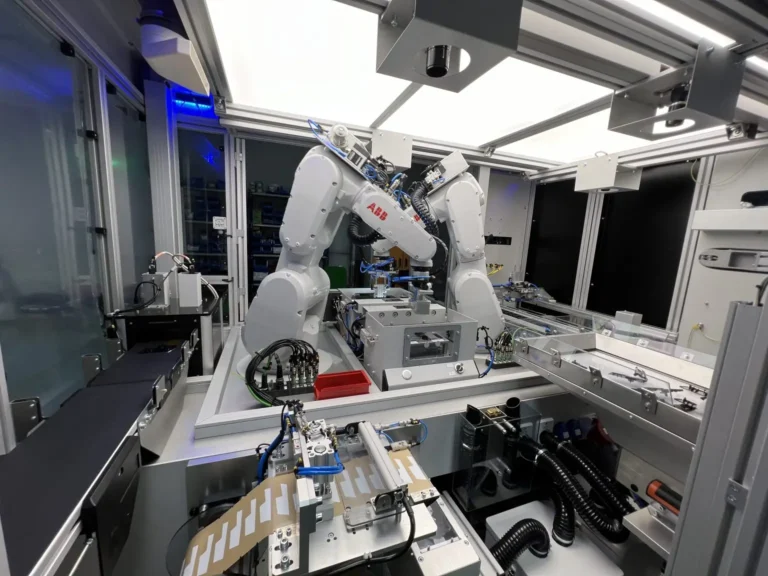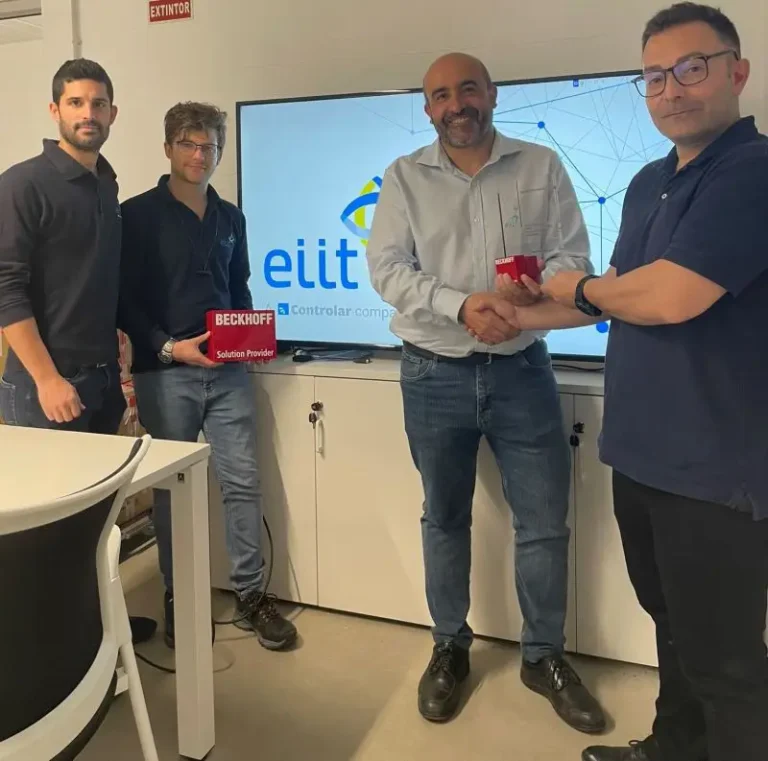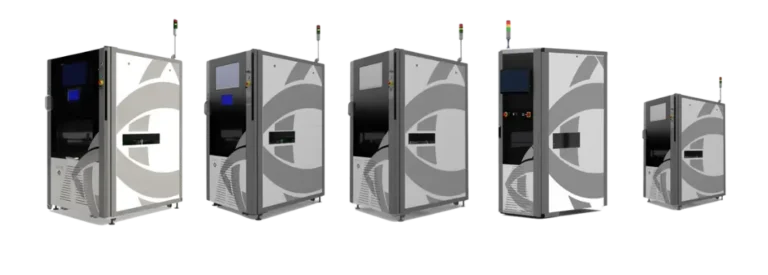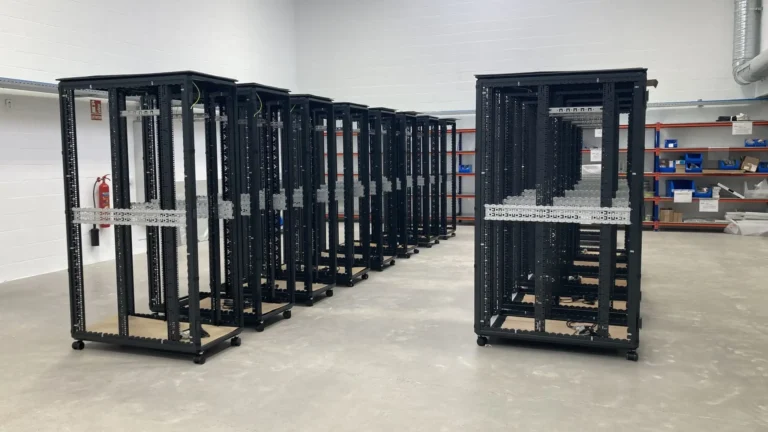Research, Development, and Innovation (R&D+i) are essential for the evolution of any industrial sector. However, in the field of test engineering and automation, innovation is not only about new technologies but also about optimizing and refining existing processes.
At EIIT – a Controlar company, every project presents a unique challenge that drives us to develop innovative solutions that maximize reliability, reduce costs, and optimize testing and production time. Here are ten key aspects of R&D+i that you might not have known.
1. R&D+i Is Not Just About Technology — It’s About Optimizing Testing and Automation Processes
When we talk about R&D+i, people often think of groundbreaking technological advancements. However, in sectors like test engineering and industrial automation, innovation doesn’t always mean creating something entirely new. Instead, it often involves improving and refining existing processes to make them more efficient, faster, and more precise.
At EIIT – a Controlar company, we focus our R&D+i efforts on:
- PCB test optimization: We reduce test time without compromising accuracy by implementing parallel testing, fixture optimization, and test sequence automation, among other strategies.
- Production test automation: We use collaborative robots and automatic handling systems to minimize human intervention, improving repeatability and reducing errors.
- Scrap reduction: We implement early fault detection systems to prevent defective components from advancing in the production line.
Example of Applied Innovation in Testing and Automation
One of our automotive clients needed to optimize the assembly of OLED modules. We designed a fully customized system that integrated:
- A Feasa optical measurement system to verify LED color quality and intensity.
- Universal Robots collaborative robotics to handle modules without human intervention.
- Adaptive test software that adjusts test parameters based on real-time results.

Application of R&D+i in OLED Module Assembly project
2. Artificial Intelligence and Big Data in Testing and Automation
Artificial Intelligence (AI) and Big Data are revolutionizing R&D+i in the industry. These technologies enable real-time analysis of large data volumes to optimize test and automation processes.
- AI in electronic board testing: We implement AI algorithms for defect detection in optical inspection images (AOI), reducing false positives and improving accuracy.
- Big Data in test analysis: We store and analyze ICT and FCT test data to identify patterns and optimize processes.
3. Collaborative Innovation: Strategic R&D+i Partnerships
At EIIT we believe in open innovation, working with key partners such as Beckhoff, Universal Robots, Feasa, Checksum, and Weetech to develop cutting-edge solutions.
- Beckhoff: We use their technology in industrial automation and test control systems.
- Universal Robots: We integrate collaborative robotics into test stations for automated electronic board handling.
- Feasa: Specialists in lighting and colorimetry testing for LED modules in the automotive sector.
- Checksum: We develop ICT test benches for high-precision electronic testing.
- Weetech: Leaders in continuity and insulation testing for wiring and electronics.
Each collaboration allows us to offer more advanced solutions tailored to our clients’ needs.

Agreement between EIIT – a Controlar company and Beckhoff
4. Investing in R&D+i Delivers High Returns
Companies that invest in R&D+i not only enhance their competitiveness but also achieve better financial results in the long run.
- Cost reduction: Optimized testing and production processes reduce waste and manufacturing time.
- Higher quality: Innovations in testing enable early defect detection, reducing claims and increasing customer satisfaction.
- Regulatory compliance: R&D+i investment helps companies adapt to international quality and safety standards.
5. R&D+i Tax Benefits
Investing in R&D+i not only drives innovation and business growth but can also provide significant economic benefits through tax incentives available in many countries.
For example, in Spain, companies can claim tax deductions of up to 42% on R&D expenses, along with Social Security benefits for employees engaged in innovative activities.
At EIIT, our investment in innovative projects — such as the development of automated test benches, collaborative robotics integration, and advanced measurement systems—allows us to access these incentives, facilitating reinvestment in new developments.
Additionally, European programs like Horizon Europe provide additional funding for companies working on advanced technological solutions. By leveraging different incentives, businesses can maximize their profitability while continuing to invest in innovation.
6. The Origins of ICT and FCT Inline Testing Systems
Inline testing systems emerged to ensure quality in mass electronic production.
- ICT (In-Circuit Test): Tests each component on an electronic board individually to verify proper soldering and functionality.
- ISP (In-System Programming): Programs the board’s firmware or software without removing it from the system, ensuring correct functionality.
- FCT (Functional Circuit Test): Evaluates whether the complete board works correctly by simulating real use conditions.
- RF Test (Radio Frequency Test): Tests the transmission and reception of wireless signals (WiFi, Bluetooth, mobile networks) to ensure compliance with standards.
For example, our RFILS Test Flash loads and verifies firmware in the board’s memory, ensuring correct programming and startup.

EIIT – a Controlar company In-Line Test Equipment
7. No Competitive Company Overlooks QA
In a highly competitive industrial environment, the quality of the final product is non-negotiable. Leading companies in sectors such as automotive, aerospace, and electronics cannot afford failures in their products, as these could result in high warranty costs, claims, and loss of reputation.
The automation of quality control (QA) has made product testing more efficient and precise, ensuring that only devices meeting the highest standards reach the market. The key to a solid QA system in testing and automation lies in combining different validation strategies.
At EIIT, we integrate automated ICT and FCT testing, machine vision, Feasa optical measurement, and advanced functional testing, ensuring that every tested device meets customer requirements. This allows us to identify defects early, reduce rework, and prevent defective components from advancing to later production stages.
The most innovative companies invest in predictive and preventive QA, leveraging technologies such as machine learning to anticipate potential failures before they occur. At EIIT, we develop intelligent test data analysis systems that detect error patterns and optimize testing processes in real-time.
Quality is not only a market requirement but also a key differentiator to ensure customer trust and production efficiency.
8. International Collaboration in R&D+i
Innovation is not an isolated process; it thrives on collaboration between companies, universities, and research centers worldwide. In the field of test engineering and automation, where technological evolution is constant, staying connected with key industry players enables the development of more advanced solutions.
Programs such as Horizon Europe foster international cooperation to tackle technological challenges through consortia of companies from different countries.
At EIIT – a Controlar company, we work with global strategic partners such as Beckhoff, Universal Robots, Feasa, Checksum, and Weetech to develop innovative test solutions. Thanks to these collaborations, we have implemented advanced technologies such as collaborative robotics in functional testing (FCT), modular test benches, and high-precision optical analysis systems. The synergy with these companies allows us to access cutting-edge technology and adapt our test systems to the specific needs of each client.
International collaboration also accelerates the development of new solutions. By sharing knowledge and experiences with other industry experts, we can anticipate technological trends and develop more efficient solutions. EIIT is not only involved in innovative projects at a local level but is also part of a global innovation ecosystem, where each partnership strengthens our commitment to the development of cutting-edge test and automation technologies.
9. R&D+i and Sustainability in the Industry
R&D+i also drives sustainable solutions:
- Energy efficiency in testing: We optimize electricity consumption in test benches.
- Waste reduction: We detect failures in early stages to avoid material waste.
- Smart automation: We implement systems that reduce the carbon footprint in industrial processes.
10. Innovation in Prototyping: Faster Testing and Validation
Technology has revolutionized product validation before mass production.
- 3D printing and digital manufacturing enable the rapid creation of test fixture prototypes.
- Simulation software accelerates the design of automated test systems, reducing development time.
- Modular test benches facilitate the validation of multiple products without the need for complete redesigns.
At EIIT – A Controlar company, we have implemented innovative prototyping solutions that have reduced test bench development times by up to 40% for our clients.

Test Benches for Aeronautics carried out at EIIT
Conclusion: Innovation Is in Our DNA
At EIIT – A Controlar company, we don’t just adapt to technological evolution; we lead innovation in testing and automation. Each project is a challenge that drives us to develop faster, more efficient, and more precise solutions for our clients.
R&D+i is more than just technology — it is the key to optimizing processes, improving quality, and increasing competitiveness in an ever-changing industrial world.



